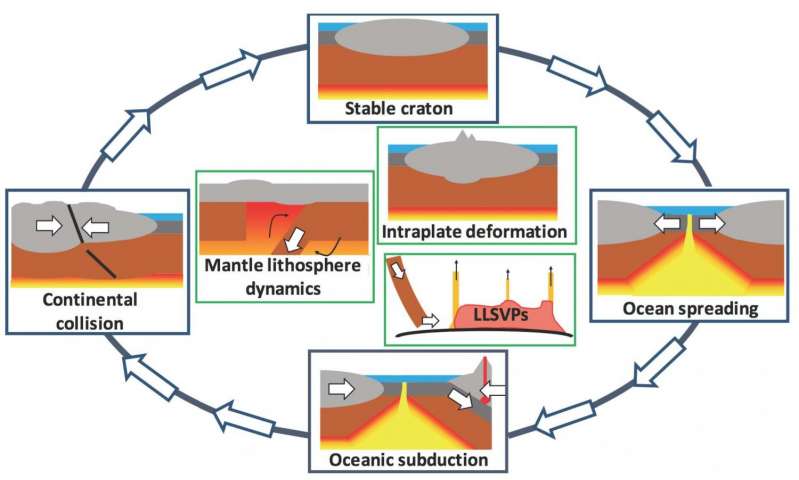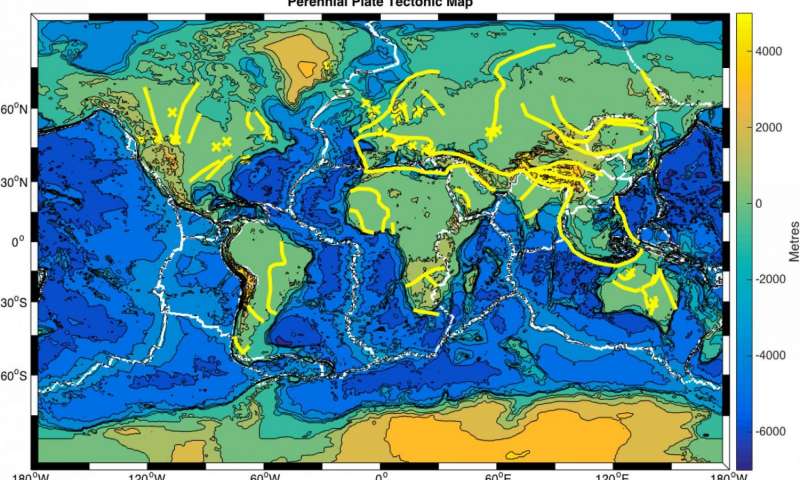At http://phys.org/print384755263.html … super computer modelling of Plate Tectonics and how it effects the crust and upper Mantle regions, has come up with some answers it is claimed. Old geological events may have actually come to life over and over again and are involved in earthquakes, any kind of seismic phenomena including mountain building, and various other earth processes not fully understood. You can do anything with a super computer it would seem, even iron out the anomalies in Plate Tectonics theory.
The claim made by the simulators is that this computer input of specific data, problematic to Plate Tectonics, will alter the mainstream teaching and consensus theory of Plate Tectonics. In other words, Plate Tectonics and how it is taught now has got it wrong – in certain circumstances. The authors seem to have learned a few tricks from climate science and the idea is to cover up criticism from geologists not fully supportive of Plate Tectonics. It is a neat trick when you think about it.
The actual paper is published in Nature Communications and seeks to show dormant hidden ancient plate boundaries (entirely invented by computer modelling you may note) are responsible for anomalous tectonic activity nowhere near current plate boundaries. In other words, the claim is that ancient plate boundaries still exist, hundreds of thousands of years of age, and not only that they can cause the sort of thing expected from modern so called plate boundaries. Rather than admit the mainstream Plate Tectonics theory is not as solid as claimed by consensus scientists they have shifted the problem of explaining the anomalies by inventing anicent plate boundaries (which are otherwise hidden but lurking the dark regions of the crust and upper Mantle). Is your average geologist, or dissenting geologist going to accept this? It will be interesting to see how the paper is received.
The assumption, and all computer simulation is based on some assumptions, is that the so called Wilson Cycle is a reality. This is the hypothesis that super continents form and deform over long periods of geological time. Hence, Pangea was not just a feature of the early dinosaur age, breaking up in the middle and late dinosaur age, but has been occurring and reoccurring for billions of years. Using this as a starting point they use the hypothesis to locate former plate boundaries – and lo and behold they just happen to coincide with the data fed into the super computer (the anomalies).

The Expanding Earth theory does not require the Wilson Cycle but that does not mean it is any more correct than the Plate Tectonics model. However, dissident geologists (including expanding earth advocates) have, over the last 40 years or so, drawn attention to a variety of geological anomalies – and these appear to be a thorn in the side of the born again Plate Tectonics people. These anomalies include seismic activity in regions far from plate boundaries and mountain building in regions too far to be influenced by plate crumpling. You may also note it is necessary to have India banging into Asia (after detaching itself from Antarctica and Australia and journeying across the Indian Ocean) in order to account for the uplift evident in the Himalayas and Hindu Kush etc. Some people have suggested India was always part of Asia and present some interesting evidence for their view ( see www.ncgt.org ). Likewise, it is standard geological theory, as taught in universities and schools, that the African plate bumped into the European plate and caused the uplift of the Alps. However, it is not as simple as that as the same bump is supposed to have continued to affect regions north of the Alps including the uplift of downs and hills in southern England, including the distortion evident in the chalk formation from the Chilterns, under the London Clay, re-emerging in the North and South Downs. In the image below you will see an ancient plate boundary in the region of the English Channel. How very convenient. Is geology taking a cue from climate science?

